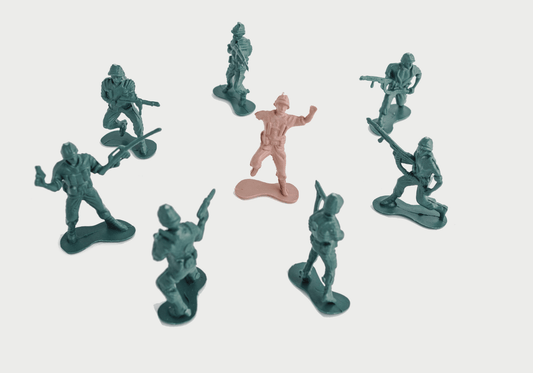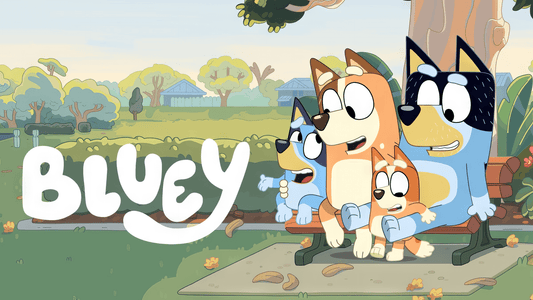Building a Resilience Toolkit for ADHD & Autistic Kids
Neurodivergent children often face unique challenges that, if left unaddressed, can shape their self-perception in negative ways. Time-blindness, impulsivity, frustration intolerance, communication barriers, and emotional regulation difficulties can make daily life more difficult—both for the child and their parents. However, these challenges are not flaws, and they don’t have to define a child’s identity. With the right support, neurodivergent kids can develop self-awareness, coping strategies, and confidence in their abilities.
The key is to teach skills over time, rather than expecting kids to “just figure it out.” This chapter provides practical tools for different age groups, as well as tips for neurodivergent moms who may not have had these resources themselves.
Building the Toolkit: Age-Based Strategies
Ages 3-6: Early Foundations
Young neurodivergent children are still learning how to navigate their emotions, impulses, and the world around them. At this stage, the goal is to lay the groundwork for self-regulation, time awareness, and communication.
Challenges & Solutions:
-
Time-Blindness → Use Visual Timers & Routines
- Use sand timers, countdown apps, or color-coded clocks to help them see time passing.
- Create predictable routines with picture schedules or songs for transitions (e.g., a cleanup song before bedtime).
-
Impulsivity → Teach “Pause & Check” Games
- Play games like Red Light, Green Light or Simon Says to practice stopping before acting.
- Use “Pause Cards”—when they feel like interrupting, they hold a special card for 3 seconds before speaking.
-
Frustration Intolerance → Normalize Breaks & Self-Calming
- Teach “bubble breathing” (inhale like you’re smelling a flower, exhale like you’re blowing a bubble).
- Create a cozy corner with fidget toys, weighted blankets, or calming books where they can go when overwhelmed.
-
Communication Barriers → Model Simple Scripts
- Practice short, direct phrases: “I need help,” “That is too loud,” “I am not ready yet.”
- Use social stories (short, illustrated stories that explain social situations step by step).
-
Emotional Regulation → Label & Validate Feelings
- Instead of saying “Stop crying,” try: “I see you’re feeling frustrated. That makes sense. Let’s take a deep breath together.”
- Use emotion charts with pictures of different facial expressions to help them identify feelings.
Ages 7-10: Strengthening Skills
At this stage, kids are developing more independence, but they still need guidance in self-regulation, organization, and emotional resilience.
Challenges & Solutions:
-
Time-Blindness → Introduce “Time Anchors”
- Set timers with fun sounds (e.g., a chime when it’s time to put on shoes).
- Use countdowns: “Five minutes until we leave” (then show five fingers, then four, then three…).
-
Impulsivity → Teach Internal Scripts
- Use phrases like “Is this a now problem or a later problem?”
- Role-play situations where pausing helps (e.g., “What could happen if you blurt out the answer in class?”).
-
Frustration Intolerance → Build Tolerance to Small Discomforts
- Try the “Wait a Little Longer” game—increase waiting time before giving rewards or answers.
- Create a “What Can I Do Instead?” chart for when they feel overwhelmed.
-
Communication Barriers → Support Expressing Needs
- Teach sentence starters: “I feel __ when __ happens, and I need __.”
- Encourage writing or drawing feelings if speaking is difficult.
-
Emotional Regulation → Develop a Sensory Toolbox
- Let them choose coping strategies (squeezing a stress ball, listening to music, chewing gum).
- Introduce journaling or drawing emotions to help with expression.
Ages 11-14: Building Independence & Self-Advocacy
As kids approach adolescence, they notice their differences more and may struggle with self-esteem. This is the time to empower them with tools for emotional and executive functioning.
Challenges & Solutions:
-
Time-Blindness → Teach Planning & Chunking Tasks
- Use planners, whiteboards, or apps to track assignments.
- Encourage “chunking”: breaking tasks into 10-minute steps.
-
Impulsivity → Encourage Internal Reflection
- Introduce “Think it Through” lists:
- “What might happen if I do this?”
- “What’s another way to handle it?”
- Practice self-talk strategies: “I can slow down. I have time to think.”
- Introduce “Think it Through” lists:
-
Frustration Intolerance → Teach the “Challenge Scale”
- Have them rate problems on a scale of 1-5: “Is this a small problem or a big problem?”
- Help them identify patterns of when frustration spikes.
-
Communication Barriers → Practice Self-Advocacy
- Teach emailing teachers about accommodations.
- Role-play asking for help in a clear way.
-
Emotional Regulation → Introduce Mindfulness & Movement
- Help them discover which sensory activities calm them (yoga, stretching, deep breathing).
- Normalize stimming or fidgeting as self-regulation, not a bad habit.
For Neurodivergent Moms: Building Your Own Toolkit
Many neurodivergent moms did not grow up with these tools and may still struggle with some of these challenges themselves. Parenting your neurodivergent child can be a healing journey—one where you learn alongside them.
Tips for Building Your Own Toolkit:
- Use Timers for Yourself: If you struggle with time-blindness, set visual or sound-based reminders for transitions.
- Practice Self-Compassion: If you weren’t taught these skills as a child, it’s okay. You’re learning now.
- Find an Accountability Partner: Whether it’s a partner, friend, or therapist, having someone to check in with can help.
- Model Self-Regulation for Your Child: When you take a deep breath before reacting, they learn that too.
- Celebrate Your Progress: Every step you take to build a better system for yourself is a win.
Resilience is Built Over Time
No neurodivergent child will master these skills overnight—and they shouldn’t have to. The goal isn’t to “fix” them but to empower them with tools to navigate their world confidently.
By slowly introducing these strategies, you’re giving your child something powerful: the ability to understand themselves, advocate for their needs, and build a life that works with their brain—not against it.
And if you, as a neurodivergent parent, are learning these skills for the first time, you’re not behind—you’re just getting started.
Sources:
Featured Articles
Browse our Little Cubs Collection
-
Honey Bear Set
Regular price $37.00Regular priceUnit price per -
Petit Monaco Diaper Bag | Stone Grey
Regular price $139.00Regular priceUnit price per -
Aviana Gourmet Play Kitchen
Regular price $1,070.00Regular priceUnit price per -
Cotton Rope Baby Changing Basket Set
Regular price $54.99Regular priceUnit price per
Oh wait! There's more!
Not Sure Where to Go Next?
Articles on Motherhood & Life
If you're a slightly weird, socially-awkward, mentally-exhausted woman with ADHD, then you've found your place. You can pull up a chair and set-up camp right next to ours.
We plan to publish articles on many topics relating to our experiences with mother- and womanhood, ADHD, parenting, herbal remedies, meditation, yoga, and staying in tune with your purpose. It may be slowly, but hopefully weekly, between mom-life and full-time jobs; so thank you in advance for your patience.
So often we move in isolation, much like bears do. But bears come together, and as a parenting village, occasionally we do too. We hope you like it here and decide to stay for a bit.
Shop Our Collections
Our sense of humor is not for everyone, but our graphic tees are worth checking out if you like to look and feel awesome. We use super-soft tees with tagless branding - perfect for those of us with texture-sensitivities.
We've also curated collections we find most valuable as working moms. These include gifts for pets, our little cubs, your best friend, your neighbor, or yourself. We'll continue to add items to the shop, but we welcome feedback if there are items you'd love to see.
Stoner Glossary
New to the world of our girlfriend, Mary Jane? Check out our glossary of terms to help you navigate the industry around this happy herb.
Policies & Terms
Please refer to the following linked documentation for our website and shop policies:
Resources
Our special section of recommended resources, Notion templates, freebies, and e-books.
Check out areas about Cannabis, Parenting & Neurodiversity, or Notion











